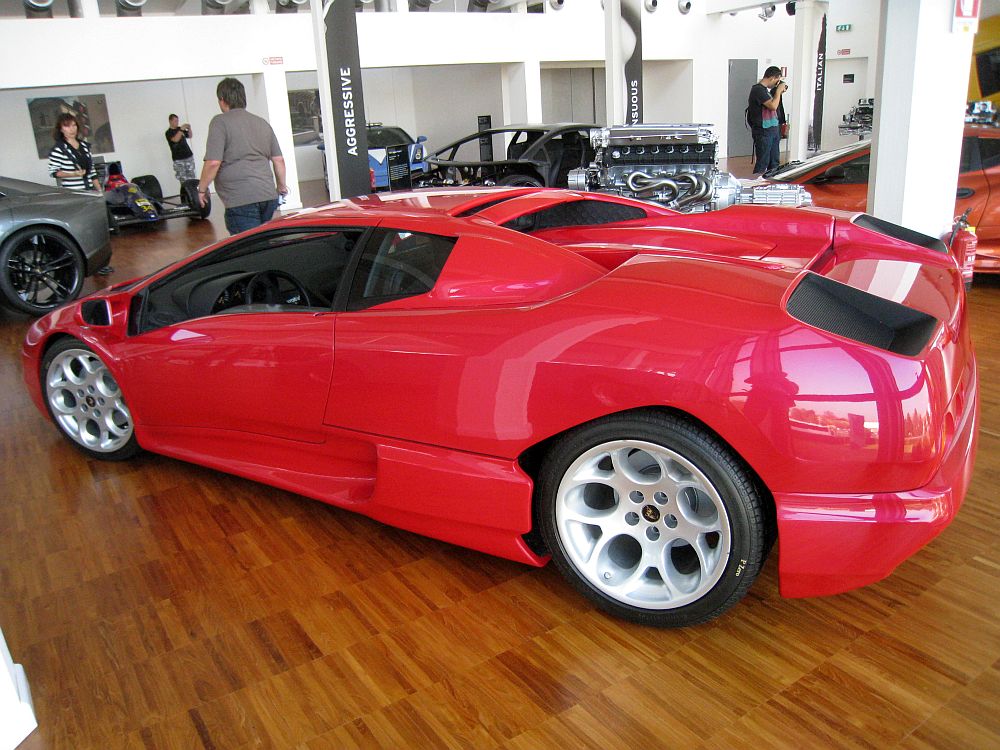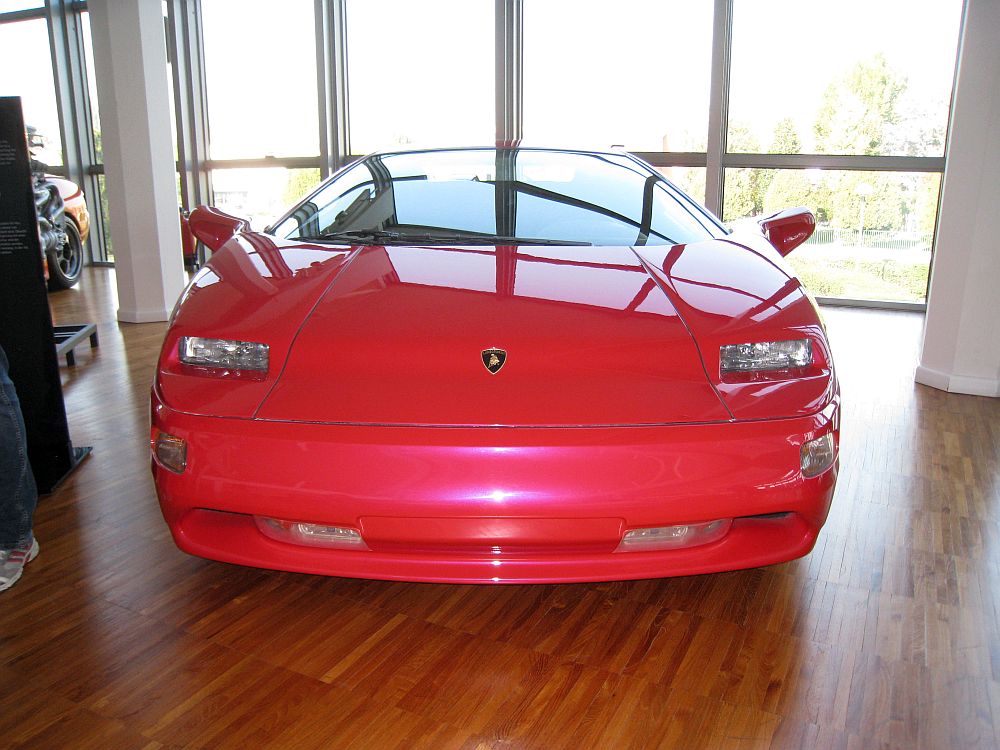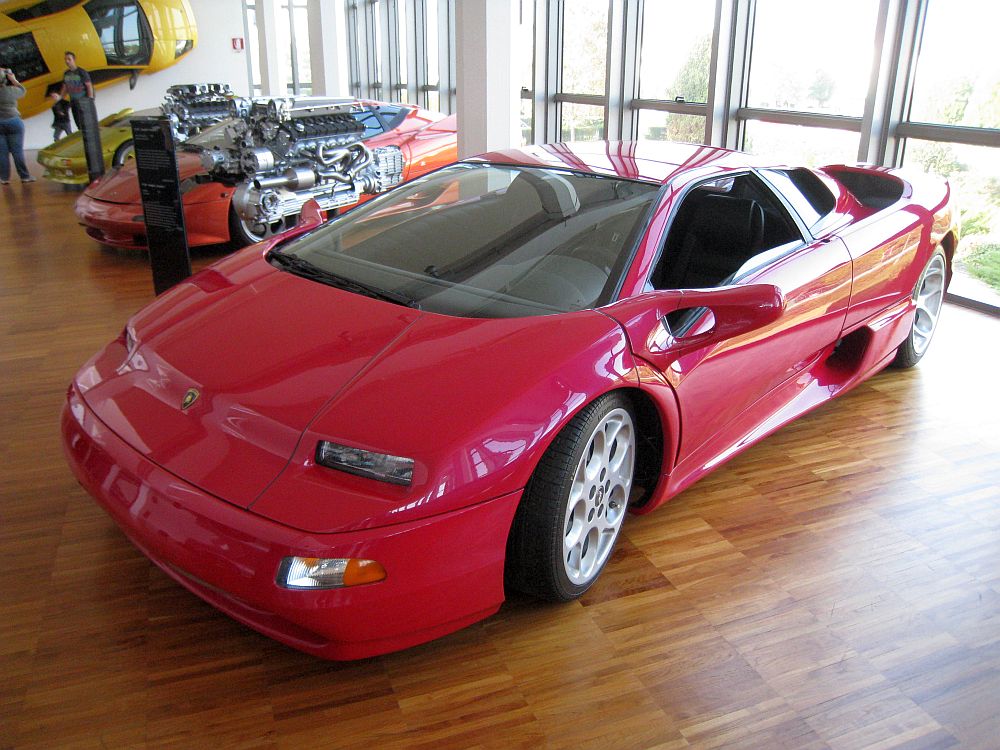Description
The Lamborghini P147 Acosta was a fascinating and little-known prototype developed in the early 1990s as part of Lamborghini’s ongoing effort to create a smaller, more accessible sports car to complement its flagship V12 models. Conceived during the Chrysler ownership period, the P147—nicknamed “Acosta” after a Spanish test driver involved in its development—was intended to be a successor to the stillborn P140 project. It represented Lamborghini’s second serious attempt at producing a V10-powered model years before the eventual arrival of the Gallardo. Although it never entered production, the Acosta played an important role in shaping Lamborghini’s later engineering direction and foreshadowed the company’s eventual expansion into the V10 supercar segment.
The origins of the P147 Acosta can be traced to the late 1980s, when Lamborghini recognized the need for a smaller, more affordable model to sit below the Diablo. The P140 prototype, developed between 1988 and 1991, had come close to fulfilling this goal but was abandoned when Chrysler, then Lamborghini’s parent company, decided to focus on the Diablo’s production and refinement instead. However, after Chrysler sold Lamborghini to the Indonesian investment group Megatech in 1994, the concept of a “baby Lamborghini” was revived under the new internal project code P147.
The P147 Acosta was envisioned as a mid-engine supercar powered by a new 3.9-litre or 4.0-litre V10 engine—a continuation of the powertrain concept introduced in the earlier P140. The naturally aspirated ten-cylinder engine was projected to produce between 370 and 400 horsepower, placing it neatly between the more modest Ferraris and the much more powerful V12 Diablos. Mated to a five-speed manual gearbox, the car would have offered rear-wheel drive and a curb weight under 1,300 kilograms, giving it a top speed of around 290 km/h (180 mph) and a 0–100 km/h (62 mph) acceleration time in under five seconds.
The chassis design was based on a lightweight tubular steel frame, similar in principle to the Diablo’s structure but smaller and more rigid. The suspension was fully independent, using double wishbones and coil springs to provide sharp, responsive handling. Lamborghini intended the P147 to be not only fast but also more user-friendly than its V12 counterparts—easier to drive, easier to maintain, and practical enough for daily use. In this sense, it was a spiritual ancestor to the Gallardo that would eventually fulfill those ambitions more than a decade later.
Stylistically, the P147 Acosta was influenced by the aerodynamic trends of the early 1990s, combining wedge-like proportions with smoother, flowing surfaces. The design, reportedly overseen by Marcello Gandini with input from in-house engineers, retained the classic Lamborghini DNA—low stance, wide haunches, and dramatic side intakes—but softened the extreme angularity of previous models. Its body featured prominent air intakes ahead of the rear wheels, a sharply pointed nose, and a broad rear section dominated by integrated taillights and a central exhaust outlet. The roofline was more rounded than the Countach or Diablo, suggesting a car aimed at modernity and refinement as much as raw performance.
Unlike many earlier Lamborghini prototypes, the P147 Acosta was more than a static design study. It was a fully functional prototype used for engine and chassis testing, and according to reports, it underwent limited on-road evaluation in Italy. Tragically, during one of these test sessions, the prototype was involved in a high-speed accident that resulted in the car’s destruction and the death of its test driver, whose surname “Acosta” became forever associated with the project. The loss of the prototype, coupled with Lamborghini’s limited resources under Megatech ownership, led to the cancellation of the P147 program before it could progress further.
Despite its abrupt end, the P147 Acosta left an enduring legacy within Lamborghini’s engineering evolution. Many of the ideas explored during its development—particularly the use of a naturally aspirated V10 and a compact mid-engine layout—were later revived during the Audi era in the early 2000s. The concept directly influenced the development of the Lamborghini L140 project, which would ultimately evolve into the production Gallardo in 2003. Even the engine architecture traced its lineage back to the early V10 concepts first tested in the P140 and refined in the Acosta.
While no complete P147 prototypes are known to have survived, the project remains a fascinating “missing link” in Lamborghini’s history—a car that bridged the gap between the analog supercars of the 1980s and the precision-engineered models of the modern era. It embodied Lamborghini’s determination to innovate even in times of financial and organizational instability.
The Lamborghini P147 Acosta may have existed only briefly, but its spirit endured. It represented the company’s early attempt to diversify and modernize, to build a car that was more accessible without diluting the brand’s ferocity or mystique. In retrospect, it was a vision that came too early—a decade ahead of its time—but one that ultimately set the stage for Lamborghini’s transformation in the 21st century.





